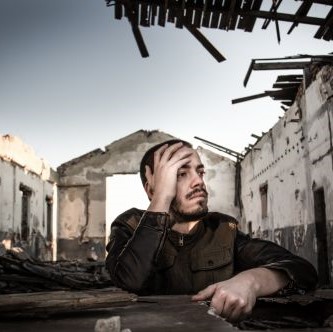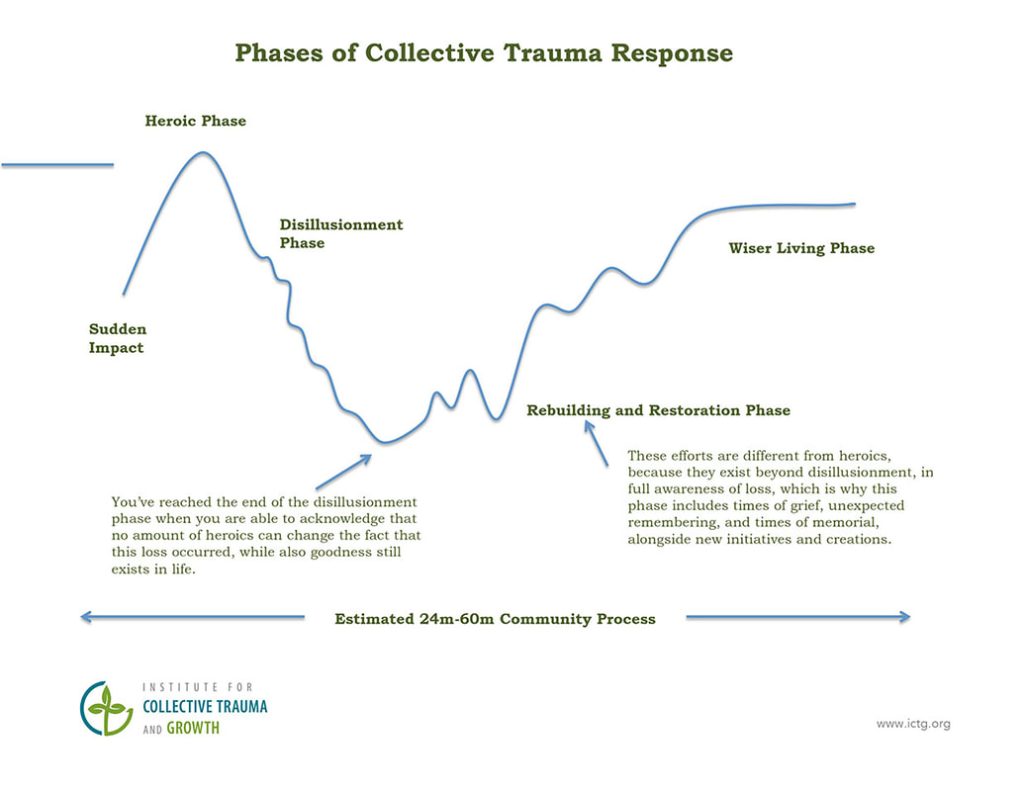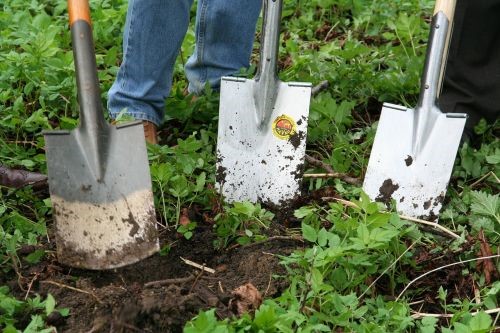
Where are we now?
What will happen in the next few months? What will Christmas look like this year? Why am I feeling like I do just now?
Whilst we probably do our best to soldier on and we are thankful for many small mercies, maybe there are times that the clouds of questions fill our view and swirl around our brains, darkening our paths and saddening our hearts.
I recently came across a very helpful website called ‘Tragedy and Congregations’ which has a very timely and pressing purpose, namely:
‘..to resource churches to respond in a healthy way to the impact of tragedies, local and global, through training both ministers in training, and serving clergy, in good practice, careful reflection, and personal resilience.’
I found all of their material extremely helpful, but a couple of blog pieces in particular stood out as making more sense of our journey through this global trauma.
Writing in June, Revd Hilary Ison reflects on the situation as follows:
‘Many are now tired, emotional, increasingly frustrated with the loss of liberties, with the denial of the usual comforts of contact with families and friends, of going out and just being normal.’

‘Losses are mounting up and realities are hitting home. Government and church leaders are not able to rescue us all and disillusion sets in, together with questioning as to whether those in charge have really done their best for us. Some just want to get back to normal and others are fearful ……’
Here she is linking our current situation to the ‘disillusionment phase’ outlined in a useful model of ‘Collective Trauma Response’ shown below:

See the Institute for Collective Trauma and Growth
It is not difficult to see how the initial stages of this model can throw light on events and responses earlier this year, as Hilary writes:
‘In the heroic phase after the initial impact of the shock event, people discharge their stress hormones that have been activated by the shock through wanting to do something, either by helping victims, or by volunteering and donating things. People are energised and it generally brings out the best in them – kindness, caring, generosity and selflessness.’
‘In response to the initial phase of the pandemic, we have certainly seen heroic and inspiring responses; amazing self-giving in those who have volunteered to help neighbours and communities, healthcare and frontline workers, clergy and congregations serving those who are in need and ministers learning to record and live stream services and finding many creative ways to engage with congregations and local communities.’
‘But operating at this level of activism is exhausting and not sustainable in the longer term. So when energy levels become depleted and the reality and awfulness of the situation sinks in, disillusion sets in. No amount of heroics can change what has happened.’
‘In the disillusionment phase, people are tired, weepy, irritable, unable to concentrate, angry at what has happened and what may or may not have happened in response to the situation, especially against those ‘in charge’. There may be grief at injury and what or who has been lost, a questioning of faith and God…..Some will be looking for a rescuer, and others will just be wanting to get back to normal as soon as possible.’
‘The difficult thing is that this stage cannot be short-circuited – the only way is through. It is messy and difficult, and requires a real holding of nerve and extra support for those in leadership.’
As Hilary points out, (and as we are even more keenly aware at this time of many local lockdowns in the north of England), our situation is not exactly like most one-off traumatic events like fires, floods, murder, suicides, terrorist attacks, earth quakes etc. She notes:
‘So what of this in the Covid 19 situation? In a sense it’s the trauma that keeps giving. Or like an earthquake with aftershocks. We do not know yet what may happen further down the line. The problem is that there are no maps available to us to help us navigate through this Covid 19 pandemic crisis as it is an unprecedented situation in the experience of this generation’.
To me personally, it feels like we had just tentatively placed one foot on the first rung of the ladder of the third phase of (partial) ‘rebuilding and restoration’ only to see the ladder teeter and fall sideways, leaving us looking down at the dark clouds of disillusionment below and wishing we didn’t have to go there again.

Hilary continues:
‘And it is at this point, when energy levels are depleted, that we as communities and churches are being asked to be creative all over again in finding ways to develop a ‘new normal’, which may only be temporary, to cope with requirements of social distancing, and won’t feel ‘normal’ at all. Perhaps this could be a new element on the chart – a transitional phase in which we try to function as best we can with the uncertainty of not knowing if we will be on a gradual trajectory out of this crisis or find ourselves back in lockdown again.’
‘The ‘rebuilding and restoration phase’ (see chart above) is yet to come and could be a long way off with many valleys and false summits to traverse.‘
In a further blog piece in August, Revd Dr. Carla A. Grosch-Miller encourages us to remember our resilient and adaptive abilities as human beings:
‘Through all the phases after and during a collective trauma, we are surviving and adapting. Human beings are constantly creating new neural pathways in the brain as we meet challenges and obstacles and learn new ways of doing things. We are born learners and we create those new pathways until we die. By now many of us have begun to master the art of holding two opposite things in our head: we will begin in person worship on _____ (fill in the blank) and maybe we won’t (if the infection rate soars). We are learning to live with unpredictability. It remains hard work for our brains and is exhausting but we are doing it.’
‘It is no surprise that the characteristics of the disillusionment phase are exhaustion, low energy, tension and conflict, and utter unpredictability and variability of emotions. There is a lot going on! ‘

‘But it is worth hanging in there so that the important, soil-turning work that happens in this phase can be done and done well.‘
‘We listen prayerfully and discerningly to our people, encouraging honesty about how this really feels, and holding both sadness for the losses, and excitement for new possibilities in tender hands. We also take good care of ourselves. This work is costly; we must steward our energies as we will be in this for the long haul and we want to lead well.’
Carla concludes her piece with these words:
‘Are we there yet? Hardly. But we are definitely on our way.
‘And we also have what we need: a faithful God who refuses to let go of us and who walks with us through the valley and into the sunlight of a new day.’
Read the full blog pieces using the links below:
You can also find many other helpful articles, resources and reflections on the Tragedy and Congregations website.
Rhoda Wu, Development Officer at Growing Old Gracefully
Quoted pieces used with permission from Christopher Southgate of the Tragedy and Congregations Project Team.

